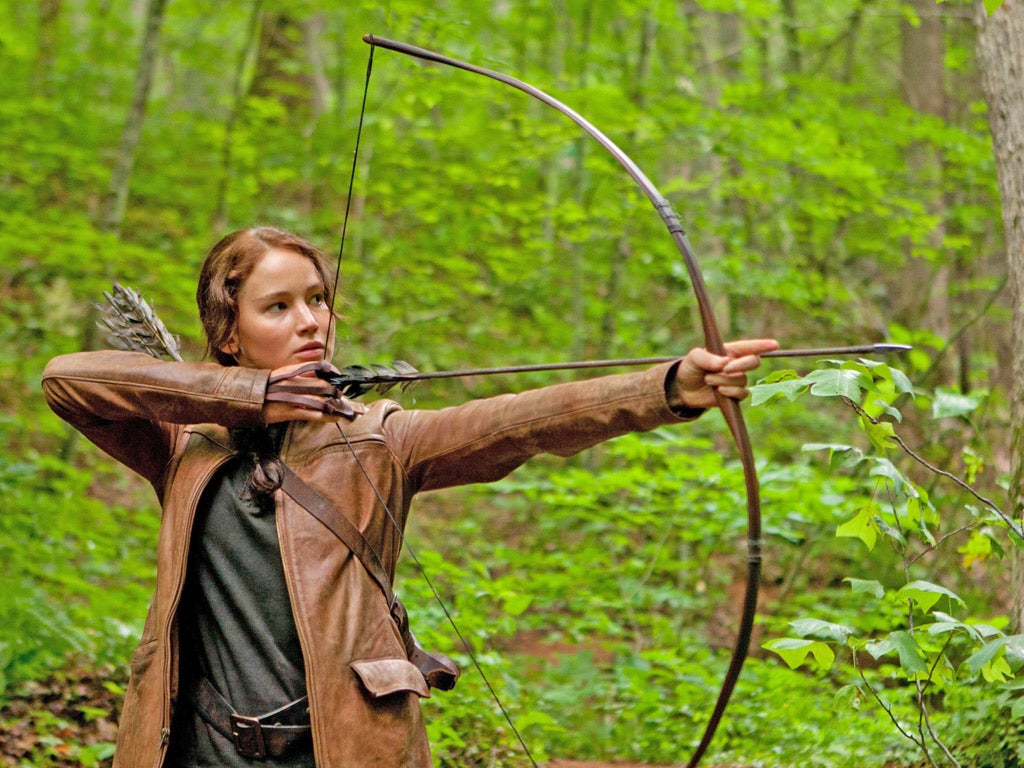New movie research shows it's lights, camera, action – just so long as the women stay silent
Studios are sticking to the old line that women don’t pull in the big bucks. Transfer that philosophy to any other business, and you'd face an industrial tribunal

The women of Hollywood are losing their voices. They’re falling silent. And not in a charming, Gallic, tap-dancing way. In a dumb, got-nothing-to-say way. According to a report published this week, female representation at the movies is at its lowest level for five years.
Across the 100 highest-grossing films at the American box office in 2012, only 28.4 per cent of speaking characters were female. Just 6 per cent of the films featured a cast where the split of speaking roles was roughly 50/50, men to women. Extraterrestrials, trolls and cartoon jungle animals probably have more chance of getting a line than a living, breathing actress does.
It is deeply weird, especially when one considers that women buy just as many cinema tickets as men – and an awful lot more than trolls and cartoon zebras do. Studios are sticking to the old line that women don’t pull in the big bucks – so it is safer not to let them try. Transfer that corporate philosophy to a bank, or any other business, and you would have an industrial tribunal on your hands.
Studios might argue that blockbusters like The Avengers and The Amazing Spider-Man have always been male domains and that women can now steal the show in their own “female-led” blockbusters, like Bridesmaids. Or they might argue that two of the biggest hits at the box office last year – The Hunger Games and Brave – featured female leads, and never mind that one is a mythical teenager in a fictional dystopian state, and the other is a cartoon princess. Meanwhile, the only film in the Top 10 to feature an entirely human (as opposed to alien or animated) cast is Skyfall, in which the three Bond girls end up as: the target in a macho, whisky shoot-out; dead; and as 007’s secretary. Women should be seen and not heard, indeed.
At least one thing is on the up for women in film – flashing flesh. According to the same report, 31.6 per cent of actresses appeared on screen in “sexually revealing clothes”, the highest proportion since the survey began five years ago. Well over half of teenage girls on screen wear provocative outfits, up 20 per cent since 2009. (It won’t surprise anyone that only 7 per cent of teenage boys are similarly sexed up.) So Hollywood likes women so long as they shut up and strip off. No wonder Seth MacFarlane chose to open the Oscars this year with a musical homage to some of the big screen’s finest actresses and their most acclaimed roles, titled “We Saw Your Boobs”.
As for older women, they might as well give up and book a round-the-world Saga cruise now. Julie Walters, 63, spoke out this week about ageism and the lack of roles for actresses her age. She also questioned “why older men on TV news programmes tend to be paired up with younger women”. It is because there are no older women left – they’ve all been sacked at the first hint of a wrinkle. Another survey this week showed that only 26 out of 481 presenters across the major channels are women aged over 50. For a female television presenter, greying hair is a fast track to being vaporised from the screen. For a man, it is a sign that they are ready to be hauled into position as heavyweight, distinguished anchor for life.
Still, Walters – like Helen Mirren and Judi Dench – is one of the lucky ones who has made it on to the screen lately. What about all the others who have not? And what, for that matter, about all the ones in the middle – caught in the hinterland between being a hot young thing and damehood? In my job, I interview countless next big twentysomethings only to see them vanish from the radar in their thirties and forties, just as their male counterparts are building up to play Hamlet and Othello. They simply don’t have the parts. It was ever thus, perhaps. Hamlet gets 1,506 lines; Rosalind, Shakespeare’s most vocal female, just 685. Think of the biggest theatrical hits in recent memory – Posh; Enron; The History Boys; Jerusalem; One Man, Two Guvnors – all of them more or less all-male casts.
So women are becoming less vocal – in Hollywood, on television and in the West End. Does it matter? Of course it does. Culture reflects society, and if women are falling mute on the silver screen, what does that say about their position in society? Women have stories to tell – and the world wants to hear them, whether they are Hilary Mantel or Angelina Jolie, who spectacularly seized the agenda off-screen this week.
Off-screen is the key to this. While it is crucial that women of all ages are given rounded roles on screen, it is behind the scenes that the hard work’s needed. Only 4 per cent of the directors of the Top 100 films are female, and 12.2 per cent of the writers. It is hardly surprising that actresses are seeing their lines cut short, and their hemlines shortened.
Times are changing. A woman, Kathryn Bigelow, has won the Oscar for Best Director. At Cannes this month, only one film in competition is directed by a woman (which is one more than last year), but all five British films are produced by women. Josie Rourke and Vicky Featherstone have taken over at the Donmar and the Royal Court, powerhouses of new theatre in the UK. These changes will help women to find their voices again. One film about some funny bridesmaids isn’t enough.

Join our commenting forum
Join thought-provoking conversations, follow other Independent readers and see their replies